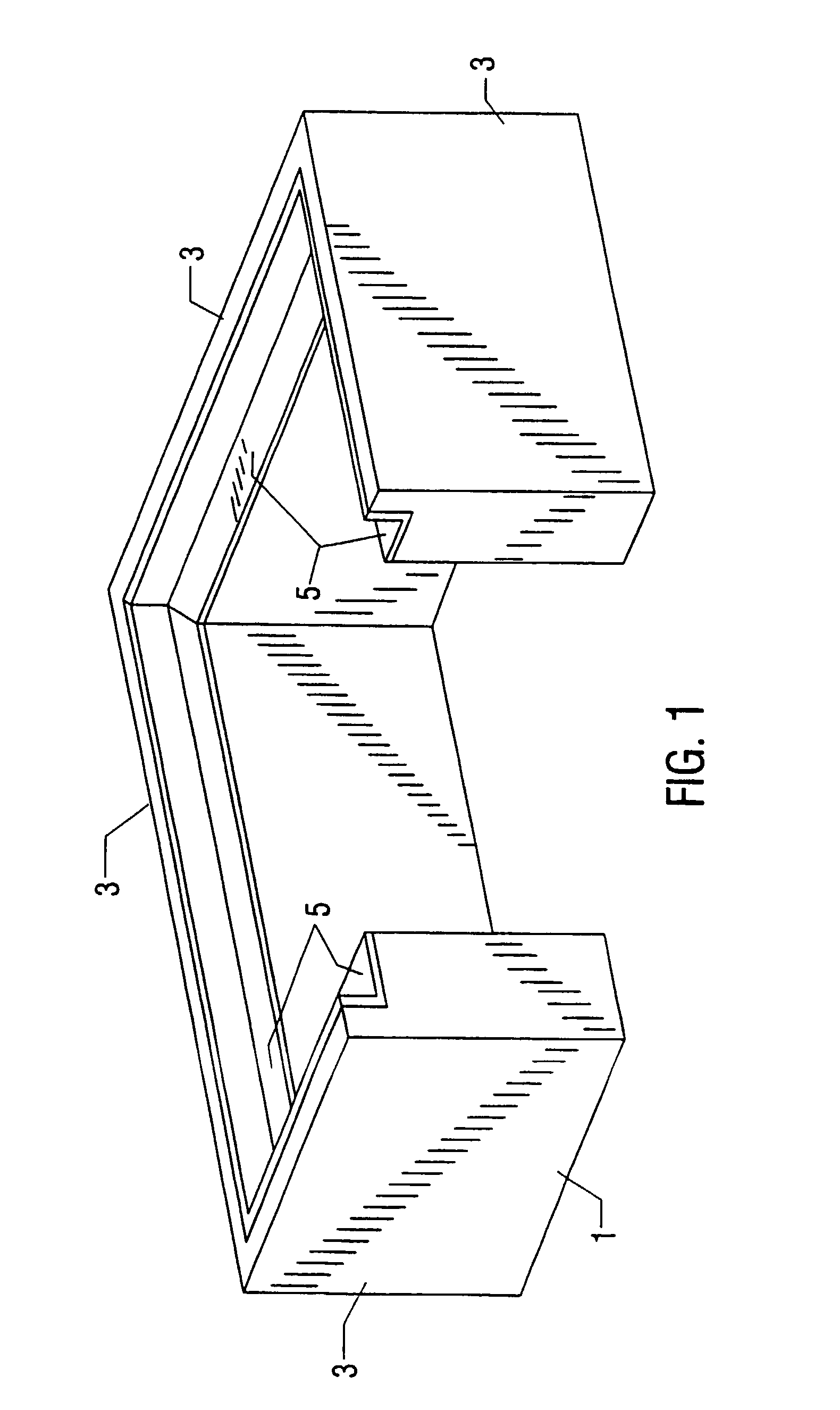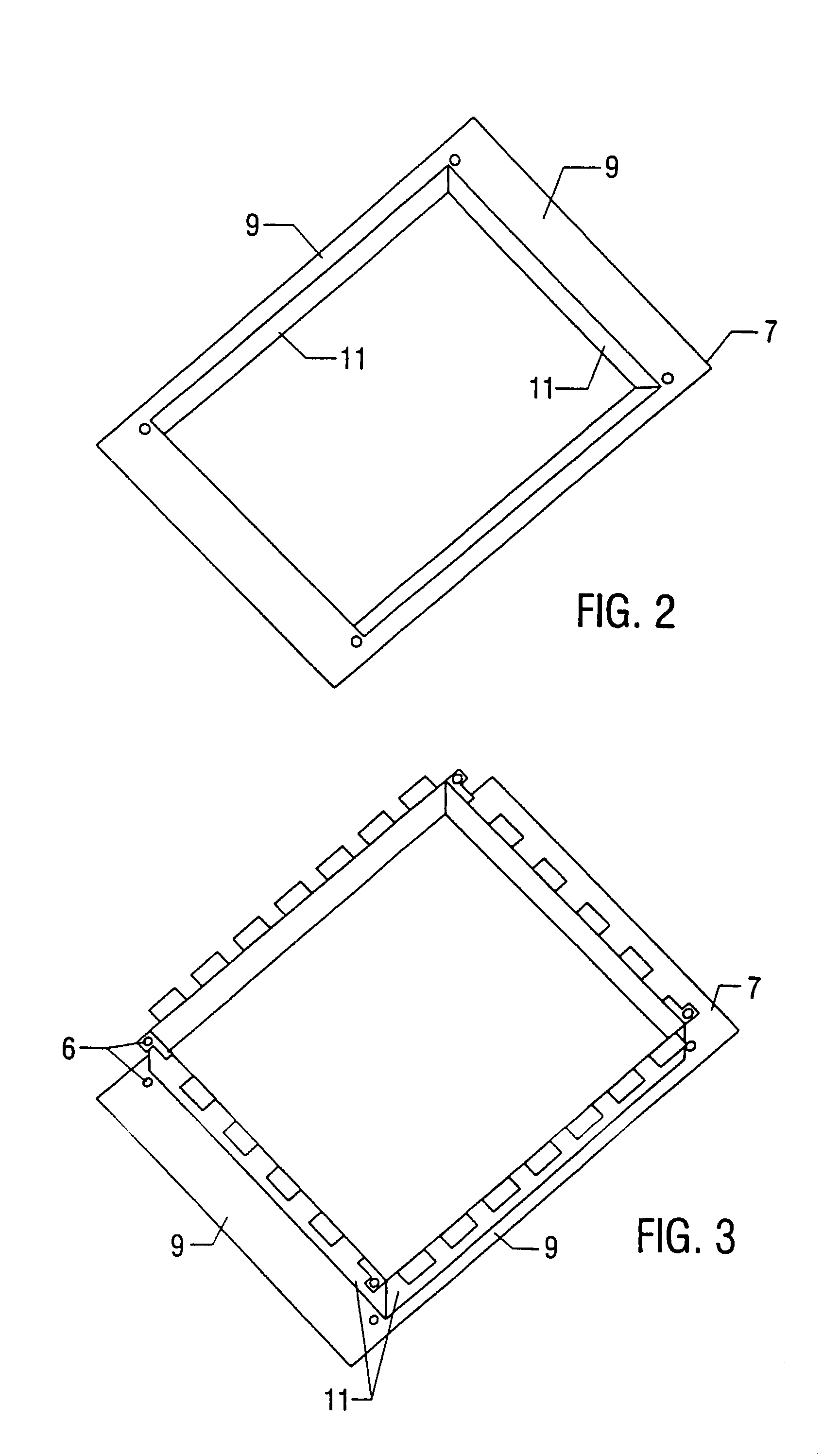Trench drain filtration system
a filtration system and drain pipe technology, applied in the direction of sewage draining, separation processes, ways, etc., can solve the problems of inability to account for variances in the dimensions of catch basins, inability to install and maintain fixed-dimension filtration systems, and increased costs, so as to facilitate the removal of the filter body, increase the fluid-flow capacity, and facilitate the service of the filtration system
- Summary
- Abstract
- Description
- Claims
- Application Information
AI Technical Summary
Benefits of technology
Problems solved by technology
Method used
Image
Examples
Embodiment Construction
[0067]The present invention relates to drain inlets adapted to receive fluid flow or run-off. Such inlets take a variety of forms, for example curb openings, inlets or drains; drop inlets, combination inlets (e.g., curb inlets combined with drop inlets) and the like. Absent a barrier, fluid will flow unimpeded into the inlet and through the drainage system. Such drainage systems generally empty into a variety of geological formations such as bays, estuaries, rivers, lakes, or underground aquifers. The present invention is directed to a filter assembly that is easily cleaned and reused or easily removed and disposed of as circumstances warrant.
[0068]Generally, the present invention comprises a filter body supported by a filter body support. Generally the filter body support will comprise a frame from which the filter body is suspended. The frame is configured to support the filter body in the desired shape and position. In addition, the frame is configured to cooperatively engage wit...
PUM
| Property | Measurement | Unit |
|---|---|---|
| width | aaaaa | aaaaa |
| length | aaaaa | aaaaa |
| lengths | aaaaa | aaaaa |
Abstract
Description
Claims
Application Information
 Login to View More
Login to View More - R&D
- Intellectual Property
- Life Sciences
- Materials
- Tech Scout
- Unparalleled Data Quality
- Higher Quality Content
- 60% Fewer Hallucinations
Browse by: Latest US Patents, China's latest patents, Technical Efficacy Thesaurus, Application Domain, Technology Topic, Popular Technical Reports.
© 2025 PatSnap. All rights reserved.Legal|Privacy policy|Modern Slavery Act Transparency Statement|Sitemap|About US| Contact US: help@patsnap.com



